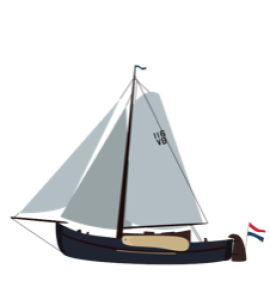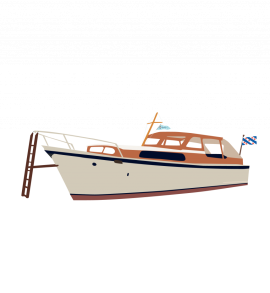Safe and Secure on the Water: Learn These Seven Basic Knots
When boating, whether you’re an experienced captain or just starting out, learning some basic knots is very important. Knots not only help secure your boat, but also manage sails, fasten lines, and ensure overall safety on the water. Here are a few essential knots you should know and how to make them.

The Figure-Eight Knot:
This is useful for securing the end of a line so it doesn’t slip away. You make it by forming a loop, passing the end of the line through the loop, wrapping it around the other side, and then pulling it back through the loop.
The Clove Hitch:
This knot is useful for securing a line to a pole or railing. Lay the line over the object, make a knot like an ‘X’, and pass the end under the loop.
The Double Figure-Eight Knot:
This is a stopper knot to prevent a line from slipping through a hole. It is similar to the figure-eight knot but has an extra loop that goes through the line.
The Cleat Hitch:
This knot is used to secure a line to a post or cleat. Wrap the line around the object, make two half hitches, and pull them tight.
The Bowline:
This knot is useful for securing a line to an anchor or heavy object. Create a loop and place the working end over it. Pass the working end through the loop and bring it back under the loop.
Practice Makes Perfect:
Practice these knots well before heading out on the water. Mistakes can lead to unsafe situations or damage to equipment. Remember that the knots should be secure but not too tight. Practicing will make you more proficient and confident as a sailor.
The Single and Double Sheet Bend:
This knot is used to create a loop at the end of a line, making it useful for attaching a line to a sail, for example. Form a loop, pass the end through it, around the line, and then back through the loop again.
The Square Knot:
This knot connects two lines of the same thickness, making it useful for creating a longer line. Ensure the lines run parallel and make two knots like an ‘X’.
The Importance of Knots Through the Years
The importance of knots in the world of boating extends far back in history. Centuries ago, knots were essential for sailors and shipmasters to manage their vessels, secure cargo, and ensure safety on the open sea. But how have these knots evolved from the time of wooden ships to today’s modern boating practices?
In the past, when sailing ships were the only means of transport over large bodies of water, knots were vital. Sailors used intricate knot techniques to hoist, trim, and secure the enormous sails. Each knot had a specific purpose, whether it was controlling the sails during strong winds, securing cargo, or fastening ropes on the deck.
Famous “seamanship knots” such as the figure-eight knot and the bowline were everyday tools for the crew. Special knots like the clove hitch provided extra grip when handling wet and slippery ropes. It was a true art to be able to tie these knots efficiently.
Today, in the world of modern water sports, knots remain an essential part of every water enthusiast’s toolkit. Despite the enormous advancements in technology and the sophisticated systems on modern boats, basic knots are still crucial. Water sports enthusiasts must still know how to tie ropes, trim lines, and secure boats safely.
Fortunately, today we have access to extensive information resources, and we can quickly and easily learn knot techniques. Numerous manuals, videos, and online platforms help water sports enthusiasts learn the right knots for their activities. Whether you are a sailor, kayaker, canoeist, or motorboat enthusiast, the basics of knot tying remain universal and indispensable.
So, while we enjoy modern water sports with advanced boats and equipment, it is still valuable to recognize how knots have helped us safely and successfully navigate the waters throughout the centuries. The knots of the past have adapted to meet today’s needs, and mastering these basic skills still helps facilitate our water sports adventures and boost our confidence.






